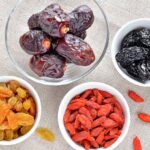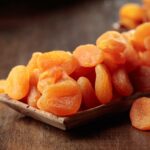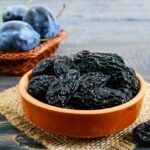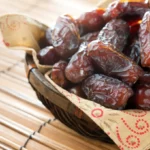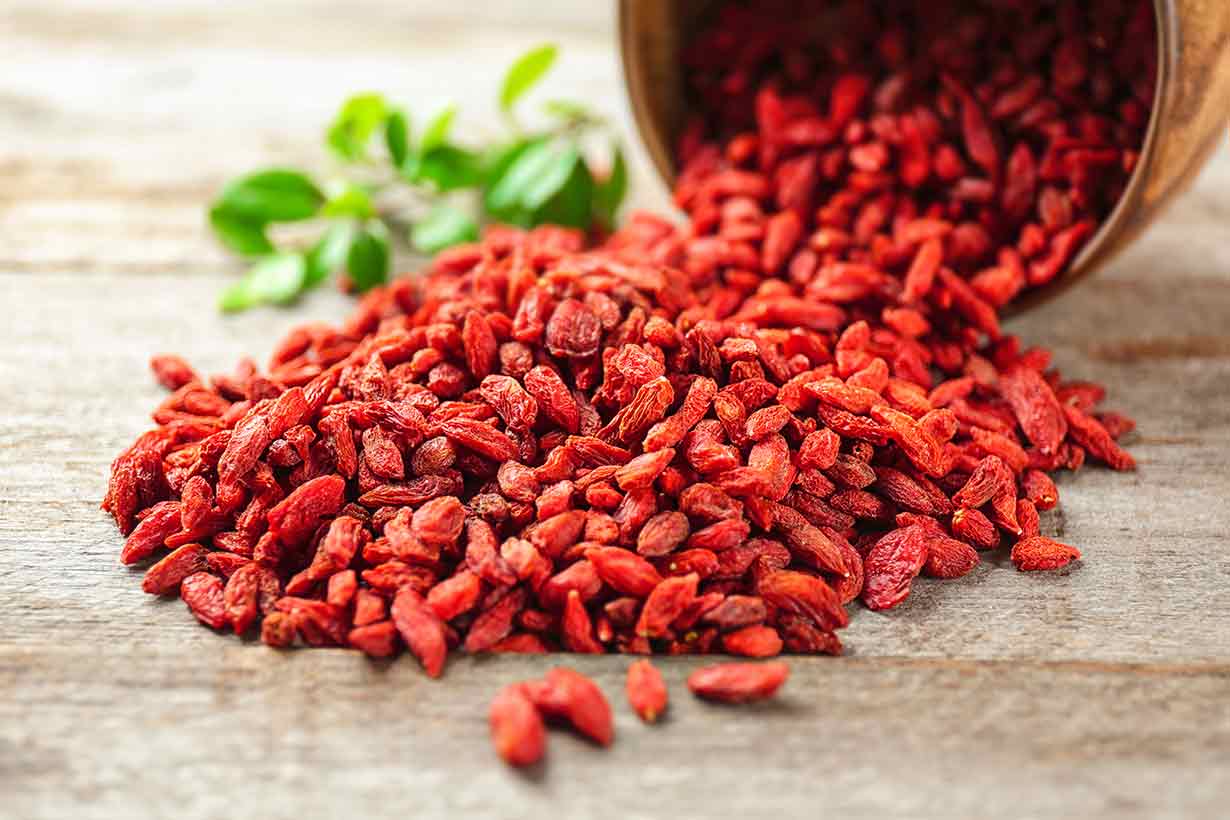There are many types of dried fruit, a form of fruit that has had its water content removed.
Dried fruit has some benefits and downsides compared to fresh fruit, and it provides a more concentrated source of nutrients (and calories).
However, how do all the different varieties compare nutritionally?
This article presents the basic nutritional values for the most common dried fruit varieties.
Unless otherwise stated, the source of all nutritional data is the USDA’s FoodData Central nutrition database.
Note: the USDA database determines the typical serving for many dried fruits as 40 grams. This amount is roughly equivalent to a quarter-cup serving.
Table of contents
- 1) Currants
- 2) Dried Apples
- 3) Dried Apricots
- 4) Dried Bananas
- 5) Dried Blueberries
- 6) Dried Cherries
- 7) Dried Coconut
- 8) Dried Cranberries
- 9) Dried Dates
- 10) Dried Figs
- 11) Dried Goji Berries
- 12) Dried Golden Berries
- 13) Dried Kiwi
- 14) Dried Mango
- 15) Dried Olives
- 16) Dried Papaya
- 17) Dried Peach
- 18) Dried Pear
- 19) Dried Pineapple
- 20) Dried Strawberries
- 21) Dried Watermelon
- 22) Prunes
- 23) Raisins
- 24) Sultanas
- How To Make Dried Fruit At Home
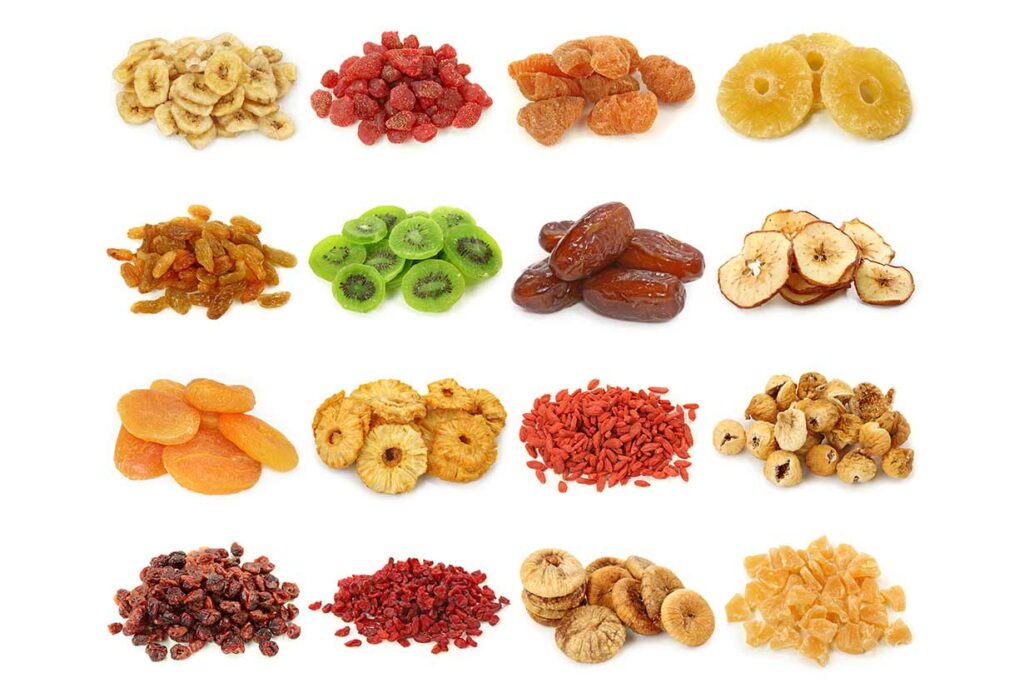
1) Currants
Currants, also known as zante currants, are the dried form of black corinthian grapes (1).
People typically use currants in baking, cereals, and trail mixes.
Here are the nutritional values for currants per 40-gram serving and per 100 grams (2):
| Name | Per 40-gram Serving | Per 100 grams |
|---|---|---|
| Calories | 116 kcal | 290 kcal |
| Carbohydrates | 30.8 g | 77.0 g |
| Fiber | 1.76 g | 4.4 g |
| Sugars | 24.9 g | 62.3 g |
| Fat | 0.09 g | 0.22 g |
| Protein | 1.37 g | 3.43 g |
2) Dried Apples
Dried apples tend to be produced in slices and have a chewy texture and sweet taste.
The table below shows the nutritional values for dried apples per 40-gram serving and per 100 grams (3):
| Name | Per 40-gram Serving | Per 100 grams |
|---|---|---|
| Calories | 97 kcal | 243 kcal |
| Carbohydrates | 26.4 g | 65.9 g |
| Fiber | 3.48 g | 8.7 g |
| Sugars | 22.9 g | 57.2 g |
| Fat | 0.13 g | 0.32 g |
| Protein | 0.37 g | 0.93 g |
3) Dried Apricots
Dried apricots are a popular form of dried fruit, and they are popular in baking, trail mixes, and even cooked recipes.
Here are the nutritional properties of dried apricots per 40-gram serving and per 100 grams (4):
| Name | Per 40-gram Serving | Per 100 grams |
|---|---|---|
| Calories | 96 kcal | 241 kcal |
| Carbohydrates | 25.0 g | 62.6 g |
| Fiber | 2.92 g | 7.3 g |
| Sugars | 21.4 g | 53.4 g |
| Fat | 0.20 g | 0.51 g |
| Protein | 1.36 g | 3.39 g |
For more information, see this full nutritional guide to dried apricots.
4) Dried Bananas
Dried bananas can come in different shapes and sizes, from round slices to long pieces.
Also known as ‘banana chips,’ dried banana is often fried and thus also contains oil. However, some dried bananas have been dehydrated and baked without additional ingredients.
The table below shows the typical nutritional properties of dried banana per ounce (28.35g) serving and per 100 grams (5):
| Name | Per Ounce (28.35g) Serving | Per 100 grams |
|---|---|---|
| Calories | 147 kcal | 519 kcal |
| Carbohydrates | 16.6 g | 58.4 g |
| Fiber | 2.18 g | 7.7 g |
| Sugars | 10.0 g | 35.3 g |
| Fat | 9.53 g | 33.6 g |
| Protein | 0.65 g | 2.3 g |
5) Dried Blueberries
Dried blueberries are a popular type of dried fruit and one of the most common berries to be sold dried.
Here are the nutrition facts for dried blueberries per 40-gram serving and per 100 grams (6):
| Name | Per 40-gram Serving | Per 100 grams |
|---|---|---|
| Calories | 127 kcal | 317 kcal |
| Carbohydrates | 32.0 g | 80.0 g |
| Fiber | 3.0 g | 7.5 g |
| Sugars | 27.0 g | 67.5 g |
| Fat | 1.0 g | 2.5 g |
| Protein | 1.0 g | 2.5 g |
6) Dried Cherries
Cherries are a popular, sweet, and juicy fruit that is even sweeter in its dried form.
Typically used in baking or as a snack, dried cherries have the following nutritional profile (7):
| Name | Per 40-gram Serving | Per 100 grams |
|---|---|---|
| Calories | 133 kcal | 333 kcal |
| Carbohydrates | 32.2 g | 80.4 g |
| Fiber | 1.0 g | 2.5 g |
| Sugars | 26.9 g | 67.2 g |
| Fat | 0.29 g | 0.73 g |
| Protein | 0.5 g | 1.25 g |
7) Dried Coconut
Dried coconut may either be dried or dried and toasted, and it may also be sweetened or unsweetened.
Dried coconut (also known as desiccated coconut) has a soft and chewy texture, whereas toasted coconut has a crispy texture. The former tends to be used in recipes, while people often consume toasted coconut as a snack.
The following tables show the nutritional values for dried coconut as well as dried and toasted coconut (8, 9):
| Name | Per Ounce (28.35g) Serving | Per 100 grams |
|---|---|---|
| Calories | 187 kcal | 660 kcal |
| Carbohydrates | 6.69 g | 23.6 g |
| Fiber | 4.62 g | 16.3 g |
| Sugars | 2.08 g | 7.35 g |
| Fat | 18.3 g | 64.5 g |
| Protein | 1.95 g | 6.88 g |
| Name | Per Ounce (28.35g) Serving | Per 100 grams |
|---|---|---|
| Calories | 168 kcal | 592 kcal |
| Carbohydrates | 12.6 g | 44.4 g |
| Fat | 13.3 g | 47.0 g |
| Protein | 1.5 g | 5.3 g |
8) Dried Cranberries
Cranberries are quite tart, so dried and sweetened cranberries are popular.
Dried cranberries also usually contain a bit of fat in the form of vegetable oils to keep them from sticking together.
Among their many uses, people often use dried cranberries in baking, cereal, salads, and trail mixes.
The following table displays the nutritional properties of dried cranberries (10):
| Name | Per 40-gram Serving | Per 100 grams |
|---|---|---|
| Calories | 123 kcal | 308 kcal |
| Carbohydrates | 33.1 g | 82.8 g |
| Fiber | 2.12 g | 5.3 g |
| Sugars | 29.0 g | 72.6 g |
| Fat | 0.44 g | 1.09 g |
| Protein | 0.07 g | 0.17 g |
9) Dried Dates
Dates are a popular fruit that grows on date palm trees, a species distributed mainly in northern Africa and the Middle East (11).
There are many different cultivars (varieties) of dates, but perhaps the most popular is the Medjool date.
Dates are sweet in their fresh form, and dried dates have even more sweetness due to their removed water content.
The table below shows the nutritional values of dried dates (12):
| Name | Per 40-gram Serving | Per 100 grams |
|---|---|---|
| Calories | 113 kcal | 282 kcal |
| Carbohydrates | 30.0 g | 75.0 g |
| Fiber | 3.2 g | 8.0 g |
| Sugars | 25.4 g | 63.4 g |
| Fat | 0.16 g | 0.39 g |
| Protein | 0.98 g | 2.45 g |
Learn more: Dried Dates: Nutrition, Health Benefits, and Research
10) Dried Figs
Figs are the fruit of a tree called Ficus carica, which grows in tropical and subtropical areas worldwide (13).
Like dates, figs are a high-sugar fruit that is even sweeter in its dried form.
Nutritionally, dried figs have the following values (14):
| Name | Per fig (8g) | Per 100 grams |
|---|---|---|
| Calories | 22 kcal | 277 kcal |
| Carbohydrates | 5.11 g | 63.9 g |
| Fiber | 0.78 g | 9.8 g |
| Sugars | 3.83 g | 47.9 g |
| Fat | 0.07 g | 0.92 g |
| Protein | 0.26 g | 3.3 g |
For more on the potential benefits of dried figs, see this complete guide:
Dried Figs: a Complete Nutritional Guide
11) Dried Goji Berries
Goji berries, also known as wolfberries, are small red berries native to China (15).
These berries have a mildly sweet taste, with slightly bitter notes in their dried form. However, they are tasty and enjoyable to eat.
Nutritionally, they are mainly a source of carbohydrates like most dried fruit. However, they provide more protein than most dried fruits.
Here are the nutritional values for goji berries (16):
| Name | Per Ounce (28g) Serving | Per 100 grams |
|---|---|---|
| Calories | 98 kcal | 349 kcal |
| Carbohydrates | 21.6 g | 77.1 g |
| Fiber | 3.64 g | 13.0 g |
| Sugars | 12.8 g | 45.6 g |
| Fat | 0.11 g | 0.39 g |
| Protein | 4.0 g | 14.3g |
12) Dried Golden Berries
Goldenberries, also known as cape gooseberries or Peruvian Ground Cherries, are native to South America (17).
Goldenberries are mildly sweet in their dried form, although they have a tangy and tart taste.
Nutritionally, dried goldenberries have the following profile (18):
| Name | Per Ounce (28g) Serving | Per 100 grams |
|---|---|---|
| Calories | 80 kcal | 286 kcal |
| Carbohydrates | 18.0 g | 64.3 g |
| Fiber | 5.99 g | 21.4 g |
| Sugars | 10.0 g | 35.7 g |
| Fat | 2.0 g | 7.14 g |
| Protein | 2.0 g | 7.14 g |
13) Dried Kiwi
Dried kiwi usually refers to sweetened slices of dehydrated kiwi fruit.
Here are the nutritional values of dried kiwi per typical portion size and per 100 grams, as provided by the brand ‘Wholesome Snacks’ (19):
| Name | Per 40-gram Serving | Per 100 grams |
|---|---|---|
| Calories | 110 kcal | 275 kcal |
| Carbohydrates | 28.0 g | 70.0 g |
| Fiber | 0 g | 0 g |
| Sugars | 20.0 g | 50.0 g |
| Fat | 0 g | 0 g |
| Protein | 0 g | 0 g |
14) Dried Mango
Mango is among the most commonly consumed fruits in the world, and there are lots of dried mango products.
Dried mango has a soft and chewy texture and a sweet taste.
The nutritional values for dried mango are as follows (20):
| Name | Per 40-gram Serving | Per 100 grams |
|---|---|---|
| Calories | 128 kcal | 319 kcal |
| Carbohydrates | 31.4 g | 78.6 g |
| Fiber | 0.96 g | 2.4 g |
| Sugars | 26.5 g | 66.3 g |
| Fat | 0.47 g | 1.18 g |
| Protein | 0.98 g | 2.45 g |
15) Dried Olives
Many people don’t realize that olives are a fruit.
However, they are among a unique group of fruits in that they are mainly a source of fat rather than carbohydrates.
Sun-dried olives have a chewy and stronger-flavored taste than their fresh counterpart.
Here are the nutritional values for dried black olives, based on data from Nutritionix (21):
| Name | Per Ounce (28.35g) Serving | Per 100 grams |
|---|---|---|
| Calories | 87 kcal | 306 kcal |
| Carbohydrates | 1.3 g | 4.5 g |
| Sugars | 0.3 g | 1.0 g |
| Fat | 8.5 g | 30.0 g |
| Protein | 0.6 g | 2.1 g |
16) Dried Papaya
Papaya is another tropical fruit with sweet and juicy flesh.
It retains the sweet taste in its dried form but develops a soft and chewy texture.
Dried papaya typically has the following nutritional properties (22):
| Name | Per 40-gram Serving | Per 100 grams |
|---|---|---|
| Calories | 118 kcal | 295 kcal |
| Carbohydrates | 30.2 g | 75.4 g |
| Fiber | 1.8 g | 4.5 g |
| Sugars | 27.0 g | 67.6 g |
| Fat | 0.34 g | 0.84 g |
| Protein | 0.5 g | 1.25 g |
17) Dried Peach
Peaches are one of the most popular stone fruit (drupes).
Unlike their juicy fresh counterpart, dried peaches have a chewy texture and a more robust flavor.
Nutritionally, dried peaches provide the following values (23):
| Name | Per 40-gram Serving | Per 100 grams |
|---|---|---|
| Calories | 96 kcal | 239 kcal |
| Carbohydrates | 24.5 g | 61.3 g |
| Fiber | 3.28 g | 8.2 g |
| Sugars | 16.7 g | 41.7 g |
| Fat | 0.30 g | 0.76 g |
| Protein | 1.44 g | 3.61 g |
18) Dried Pear
Dried pears are one of the best-tasting dried fruit varieties, with a sweet taste and chewy texture.
The table below shows their nutritional properties (24):
| Name | Per 40-gram Serving | Per 100 grams |
|---|---|---|
| Calories | 105 kcal | 262 kcal |
| Carbohydrates | 27.9 g | 69.7g |
| Fiber | 3.0 g | 7.5 g |
| Sugars | 24.9 g | 62.2 g |
| Fat | 0.25 g | 0.63 g |
| Protein | 0.75 g | 1.87 g |
19) Dried Pineapple
Dried pineapple has the same sweet taste as regular pineapple but with a chewy rather than juicy texture.
Here are the typical nutritional values for dried pineapple (25):
| Name | Per 40-gram Serving | Per 100 grams |
|---|---|---|
| Calories | 125 kcal | 313 kcal |
| Carbohydrates | 32.6 g | 81.5 g |
| Fiber | 1.48 g | 3.7 g |
| Sugars | 29.2 g | 72.9 g |
| Fat | 0.19 g | 0.47 g |
| Protein | 0.57 g | 1.43 g |
20) Dried Strawberries
Dried strawberries provide a more concentrated form of the sweetness and flavor of this popular berry.
Among their many uses, dried strawberries are typically added to cereals and used in baking.
Based on data from Eat This Much, the nutritional values of dried strawberries are as below (26):
| Name | Per Ounce (28.35g) Serving | Per 100 grams |
|---|---|---|
| Calories | 99 kcal | 350 kcal |
| Carbohydrates | 24.1 g | 85.0 g |
| Fiber | 2.3 g | 8.0 g |
| Sugars | 21.8 g | 77.0 g |
| Fat | 0 g | 0 g |
| Protein | 0 g | 0 g |
21) Dried Watermelon
Also known as ‘watermelon jerky,’ dried watermelon is thin strips of dehydrated watermelon.
Despite fresh watermelon being full of water, dried watermelon has a dry, sweet, and chewy taste and texture.
Based on data from Eat This Much, here are the nutritional values of dried watermelon (27):
| Name | Per Ounce (28.35g) Serving | Per 100 grams |
|---|---|---|
| Calories | 105 kcal | 368 kcal |
| Carbohydrates | 23.9 g | 84.2 g |
| Fiber | 0.5 g | 1.8 g |
| Sugars | 16.9 g | 59.6 g |
| Fat | 0.5 g | 0.9 g |
| Protein | 1.5 g | 5.3g |
22) Prunes
Prune is the commonly known name for dried plums.
This dried fruit has a dark appearance, soft, chewy texture, and a sweet and flavorful taste.
Nutritionally, prunes offer the following values (28):
| Name | Per 40-gram Serving | Per 100 grams |
|---|---|---|
| Calories | 96 kcal | 240 kcal |
| Carbohydrates | 25.6 g | 63.9 g |
| Fiber | 2.84 g | 7.1 g |
| Sugars | 15.2 g | 38.1 g |
| Fat | 0.15 g | 0.38 g |
| Protein | 0.87 g | 2.18 g |
See this complete guide to prunes for more information on their nutritional values and benefits.
23) Raisins
Raisins are dark-colored dried seedless grapes, and they are one of the most common types of dried fruit.
The raisin is a small, sweet, and chewy dried fruit, and it often features in trail mixes, cereals, and baked products.
The nutritional values of raisins are as below (29):
| Name | Per 40-gram Serving | Per 100 grams |
|---|---|---|
| Calories | 120 kcal | 299 kcal |
| Carbohydrates | 31.7 g | 79.3 g |
| Fiber | 1.8 g | 4.5 g |
| Sugars | 26.1 g | 65.2 g |
| Fat | 0.1 g | 0.25 g |
| Protein | 1.32 g | 3.3 g |
24) Sultanas
In some countries, sultana is the given name for lighter-colored dried grapes.
Sultanas may also be known as ‘golden raisins’ or ‘sultana raisins,’ and they tend to be produced from green grapes with a small amount of vegetable oil added.
Here are the typical nutritional values for sultanas, based on data from Eat This Much (30):
| Name | Per Ounce (28.35g) Serving | Per 100 grams |
|---|---|---|
| Calories | 85 kcal | 300 kcal |
| Carbohydrates | 19.6 g | 69.6 g |
| Fiber | 0.6 g | 2.0 g |
| Sugars | 19.7 g | 69.6 g |
| Fat | 0.1 g | 0.4 g |
| Protein | 0.8 g | 2.8 g |
Common Questions About the Different Types of Dried Fruit
Here are some frequently asked questions and answers about the different dried fruit varieties and their nutritional properties.
On a per-100-gram basis, the dried fruits that contain the most fiber are dried golden berries (21.4g), dried coconut (16.3g), dried goji berries (13.0g), and dried figs (9.8g), and dried apples (8.7g).
The dried fruit with the lowest sugar content may vary depending on if different brands use added sugar (and how much). However, based on the available data, the dried fruit varieties that typically have the lowest sugar content include dried olives (1.0g per 100g), dried coconut (7.35g), dried banana (35.3g), dried golden berries (35.7g), and prunes (38.1g).
How To Make Dried Fruit At Home
Most people buy ready-made dried fruit from the store.
However, it can be surprisingly easy to make your own at home.
The easiest way to make dried fruit is by using a dehydrator; there are many available options that vary from expensive to relatively cheap (disclosure: affiliate link).
It is possible to make all different types of dried fruit at home using a dehydrator.
It is also possible (but a bit more challenging and time-consuming) to make dried fruit in a home oven. For more information, there is a guide on how to do this here.

